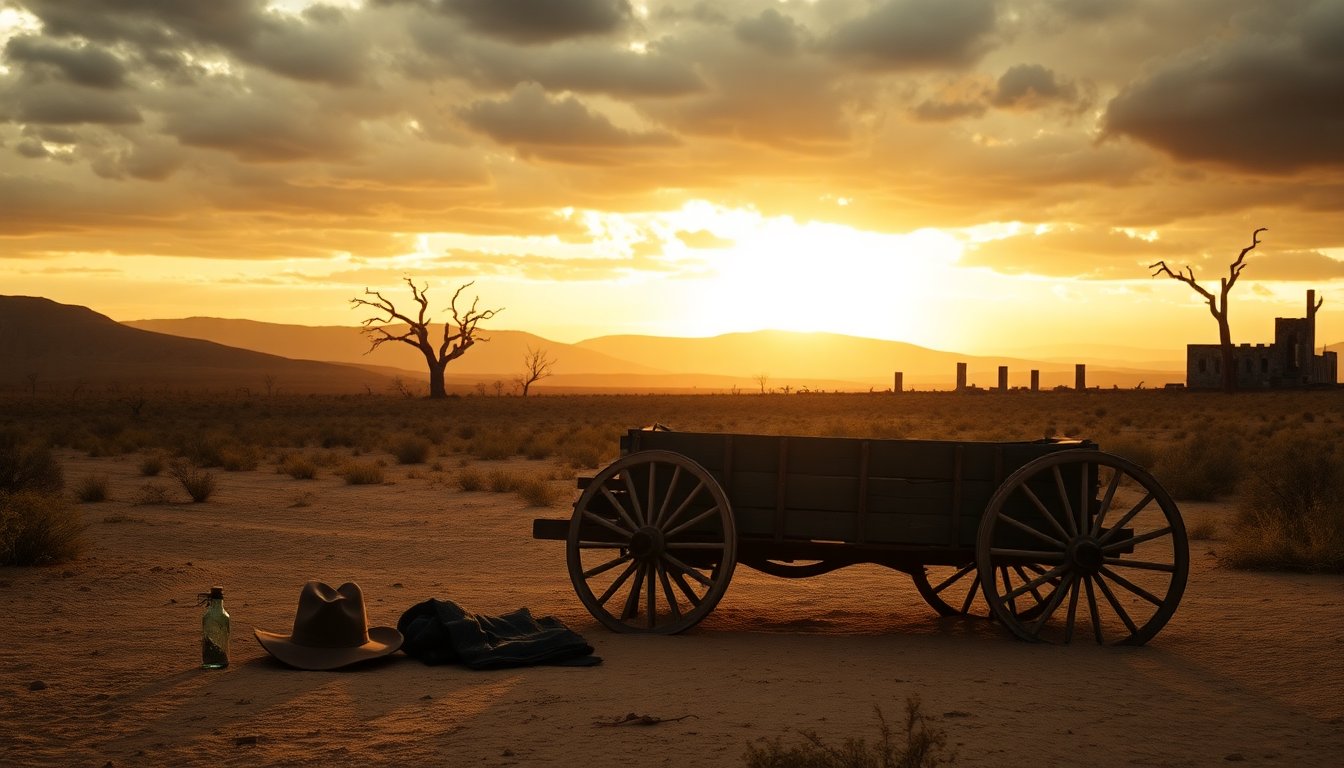Table of Contents
The film Killing Faith, directed by Ned Crowley, reimagines the Western genre by integrating supernatural elements that explore the ongoing battle between good and evil. Set in the mid-19th century American West, the narrative examines themes of morality and the unknown. While the film does not fully achieve its aspirations, it engages audiences with its intriguing premise and a strong ensemble cast.
In 1849, the Arizona territory grapples with a mysterious illness threatening both human and animal life. Amid this turmoil, Sarah, a freed slave played by DeWanda Wise, lives on a ranch with her daughter, referred to as “The Girl” (Emily Ford). Their relationship is complicated by Sarah inheriting the land from her former owner, a white settler with whom she had a tumultuous partnership. As a lone Black landowner, she fiercely protects her daughter and their home, with assistance from Edward (Jack Alcott), a loyal but simple-minded farmhand.
The journey through perilous terrain
The plot intensifies when Sarah discovers that townsfolk regard her daughter with suspicion, viewing her as a potential supernatural threat. This belief is confirmed when it is revealed that The Girl can inflict harm with a mere touch, exemplified by her inexplicable act of killing a horse. Desperate to save her daughter, Sarah embarks on a treacherous journey across the unforgiving prairie to seek help from Preacher Ross (Bill Pullman), a reputed healer. Unfortunately, the path to salvation is fraught with danger, and locals refuse to accompany them on their perilous quest.
Unexpected companions on the road
When Sarah’s group finds itself without guidance, they reluctantly accept help from Doc Bender (Guy Pearce), a troubled physician exiled from his community due to self-destructive behavior and ether addiction following the tragic loss of his family. Edward, eager to prove his worth, insists on joining them, forming a quartet. Together, they navigate the harsh desert, encountering numerous challenges. They face bandits who rob them of supplies, a peculiar group of stranded emigrants led by Joanna Cassidy, and gain survival tips from a wise Native American named Chief William Shakespeare (Raoul Max Trujillo). However, these encounters often lead to disastrous outcomes, frequently exacerbated by the supernatural events surrounding The Girl, despite Doc’s skepticism about her abilities.
The dark climax and philosophical musings
Upon reaching their destination, the group discovers that Preacher Ross is less of a savior and more of a threat. The narrative takes a darker turn as discussions arise between Doc and the preacher regarding the existence of good and evil beyond scientific comprehension. This philosophical debate adds layers to the film but also obscures its intended message. The climactic scenes, filled with violence and revenge, lack emotional impact due to unclear motivations behind the characters’ actions and the ambiguous nature of the conflict.
Despite its compelling premise, the film falters in building tension and fails to deliver the dread typically associated with the horror genre. Crowley’s previous work, the comedic film Middle Man, set a different tone, and Killing Faith struggles to evoke the same level of intensity or urgency. The cinematography by Justin Hamilton captures the stark beauty of the New Mexico landscape, while the score by the Blair siblings enhances the film’s atmosphere. However, the inability to maintain a consistent rhythm and a lack of clear thematic focus ultimately diminish its impact.
Final thoughts on Killing Faith
Killing Faith presents an innovative narrative that intertwines elements of Western and horror. However, the film struggles to deliver a cohesive experience, leaving viewers with more questions than answers. While the performances, particularly that of Guy Pearce, are commendable, they do not entirely redeem the film from its narrative shortcomings. Although the film’s ambition is admirable, it lacks the necessary depth and clarity to resonate fully with its audience, rendering it an intriguing yet ultimately unsatisfying experience.


